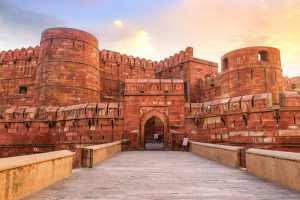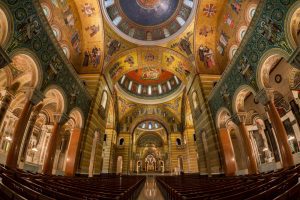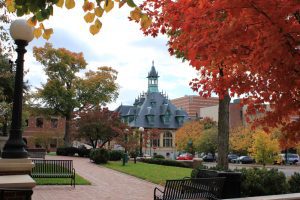Much of Germany was established during the Middle Ages as trade became common, and newfound freedom allowed for Germans to create towns around already established fortresses.
The Renaissance sparked a flame in the hearts of many artists – and much of the medieval towns and cities that live on today are an example of their artistic genius.
Today, visitors can enjoy an abundance of medieval towns thanks to painstaking restorations and the luck of certain towns and cities that managed to escape the grasp of the war.
Here is a list of the best 30 medieval towns and cities, some of which stand in their original splendor and others that have been reconstructed to mirror what once was – but regardless, are the most beautiful medieval destinations to date.
Table of Contents
1. Rothenburg Ob Der Tauber
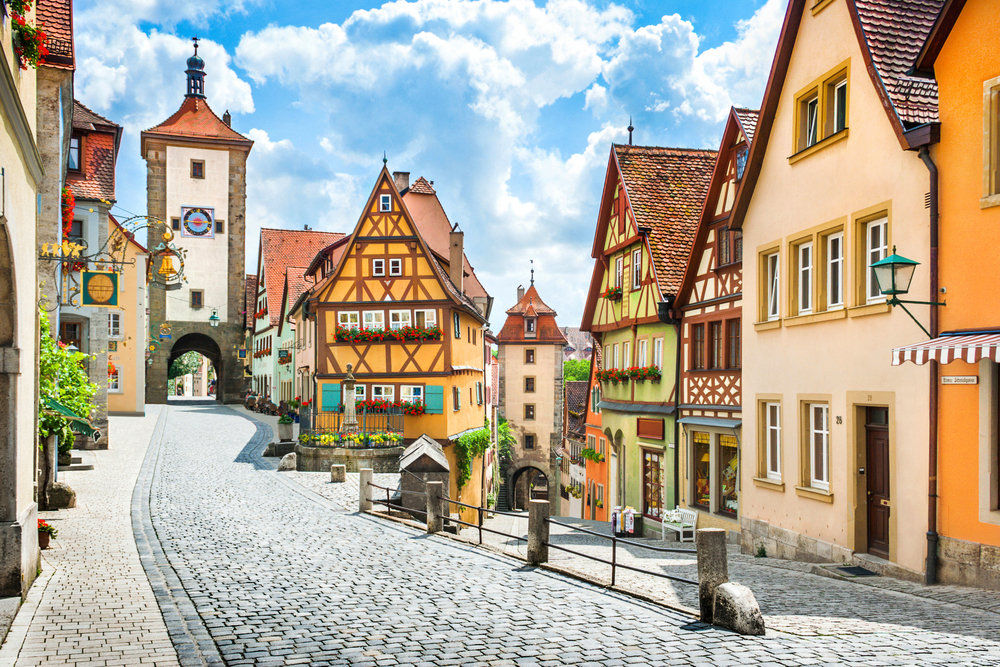
Known for having one of the most intact medieval towns in Germany, a visit to Rothenburg Ob Der Tauber is a must if you’re interested in seeing what life was like during the Middle Ages. It’s also one of the Top 16 Best Cities to Visit in Germany According to Lonely Planet.
This Bavarian old town is lined with cobblestone streets that take you through its many historic buildings, dating back as far as the 12th century.
Take time to admire the strong city walls that stand perfectly preserved, and consider reserving a walking tour to explore a few of the gate towers.
When visiting, try the town’s signature pastry, the Schneeball, which was created nearly 300 years ago on the very streets of Rothenburg Ob Der Tauber.
2. Goslar
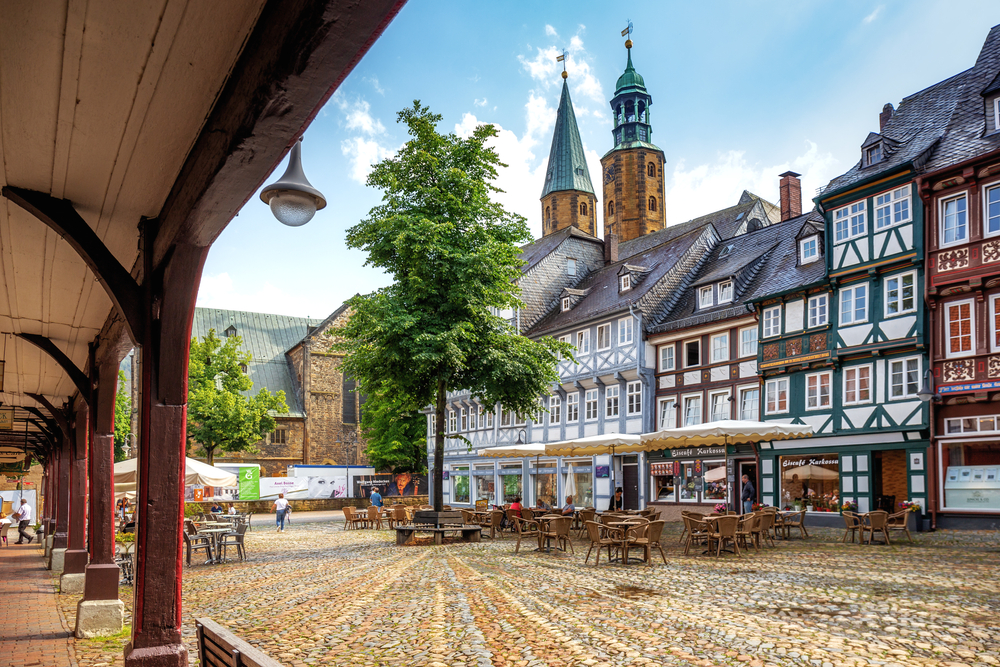
Nestled along the Harz Mountain Range, Goslar may be small in size but it is overflowing with historical significance.
The discovery of silver ore in the Rammelsberg mountain was a turning point for this medieval town and its residents as an extensive mining operation began. Although completely bare of silver today, you can visit what remains of the mine on a guided tour to further appreciate how one discovery can lead a town to such great wealth.
Walk the paved streets and admire the historical buildings, like the Imperial Palace of Goslar – one of the few well-preserved buildings from the 11th century.
Check out the Old Town Square where a bronze fountain (that has seen many additions over the years) stands tall at its center.
3. Quedlinburg
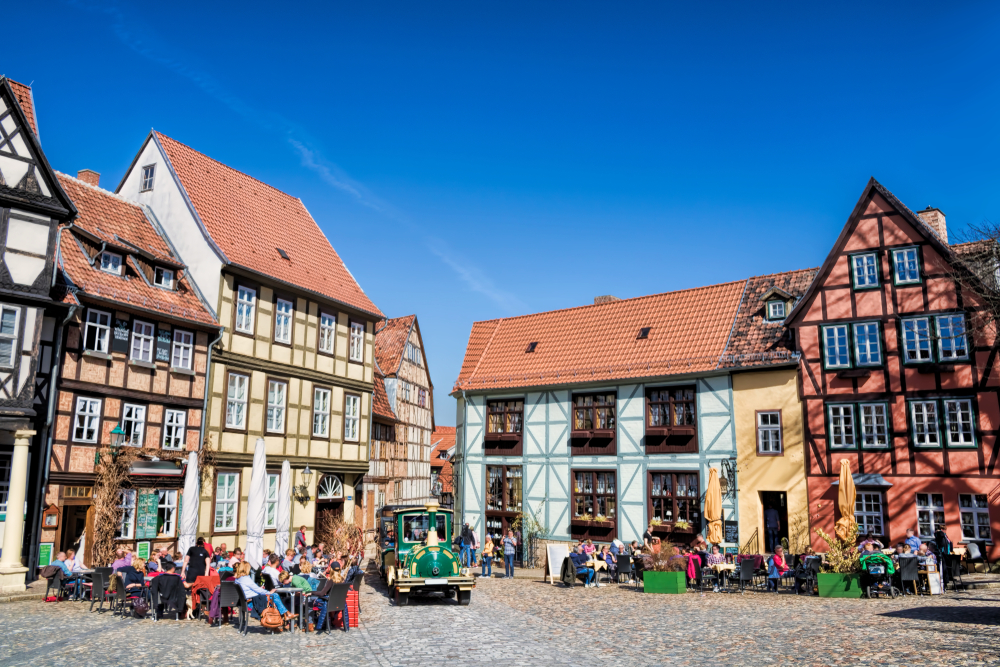
Considered to be the “birthplace of a nation”, Quedlinburg is an important part of German history and appears to be untouched by the modern-day world.
Almost all of the buildings were built as Fachwerk houses, and this unique architecture still stands today with its half-timbered and colorful design. To see the most ancient Fachwerk style home in all of Germany, make your way down the alley of Wordgasse to admire its 14th-century charm.
Take a step back in time by walking the alley of Schuhhof, where widows and orphans once spent their days in guild houses that have since been transformed into a fine selection of shops, cafés, and restaurants.
4. Regensburg

Spared by the tragedies of World War II, Regensburg has remained perfectly intact – and walking through its historic old town will leave you in awe.
There are over 1,000 historic buildings to explore, so be prepared to visit time and time again to really immerse yourself in the culture and history of the area.
This scenic town has many churches with towering spires that dominate the skyline, and narrow cobblestone paths that open up into stunning squares.
Plan a visit to Historische Wurtsküche, the oldest sausage kitchen in Europe, which dates back over a thousand years and still serves up some tasty grub.
5. Ulm
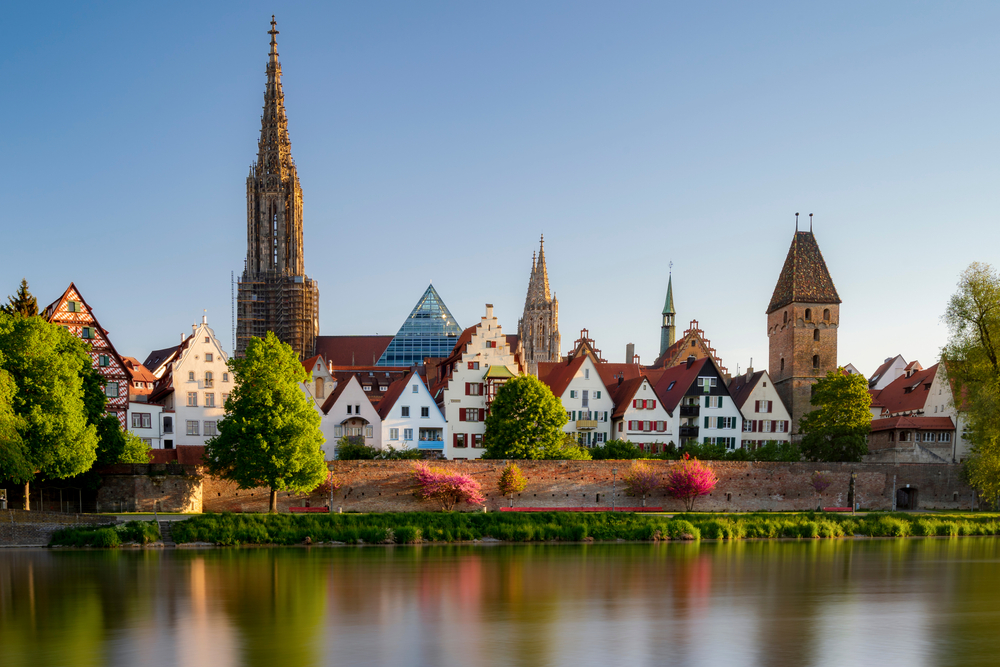
Once a free imperial city, Ulm’s convenient location at the heart of many trade routes through Europe brought it much wealth during the Middle Ages. As a result, a magnificent old town was born.
Located on the riverbank of the Danube, this medieval town is bursting with history and scenic views. Sit by the water and admire the iconic church of Ulm Münster. A visit to Ulm is worth it just to see this towering church alone – as it’s the tallest spire in the entire world, with a record height of 531 feet.
Go for a walk through the Fishermen’s and Tanners Quarter, where you can admire half-timbered houses, alleyways filled with merchants, and bridges that lead you over water-run streets.
6. Mittenwald
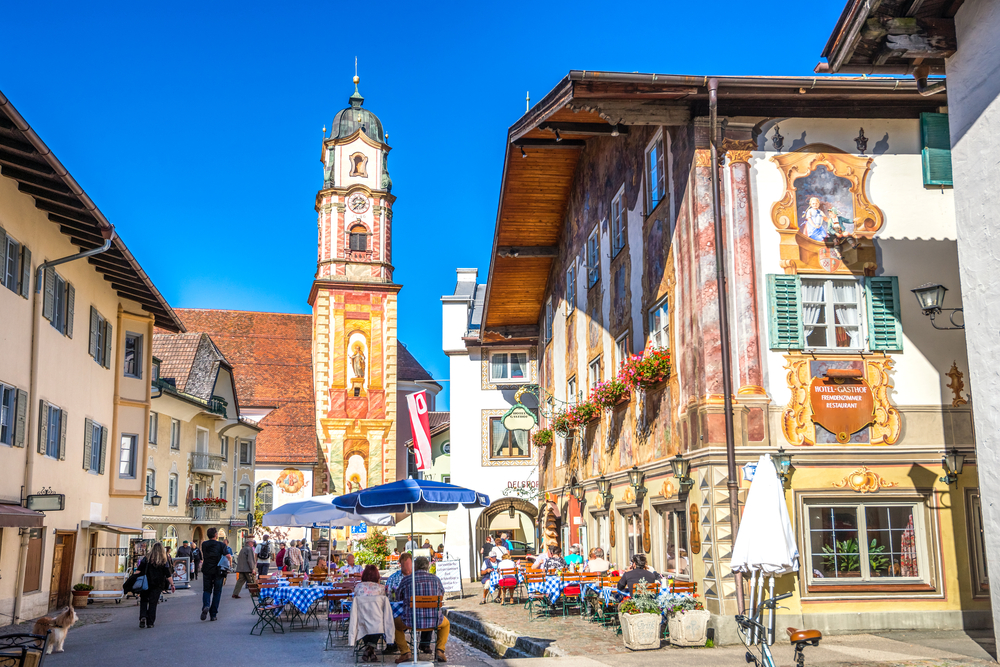
Known for being one of the most breathtaking towns within the Bavarian Alps, you’ll be surrounded by beauty from start to finish from its historic buildings to its snow-peaked mountain range.
Although much of what you see today is the product of preservation, the town has gone under various renovations to bring it back to its original medieval splendor.
Walk through the old town as you follow the alpine stream carved through its center, and take an ancient cable car up to the Karwendel Mountains for some time with nature and views overlooking the town.
Mittenwald made a name for itself centuries ago as the leading maker of violins; as you stroll through the village you’ll find many statues and murals dedicated to their creation.
7. Augsburg
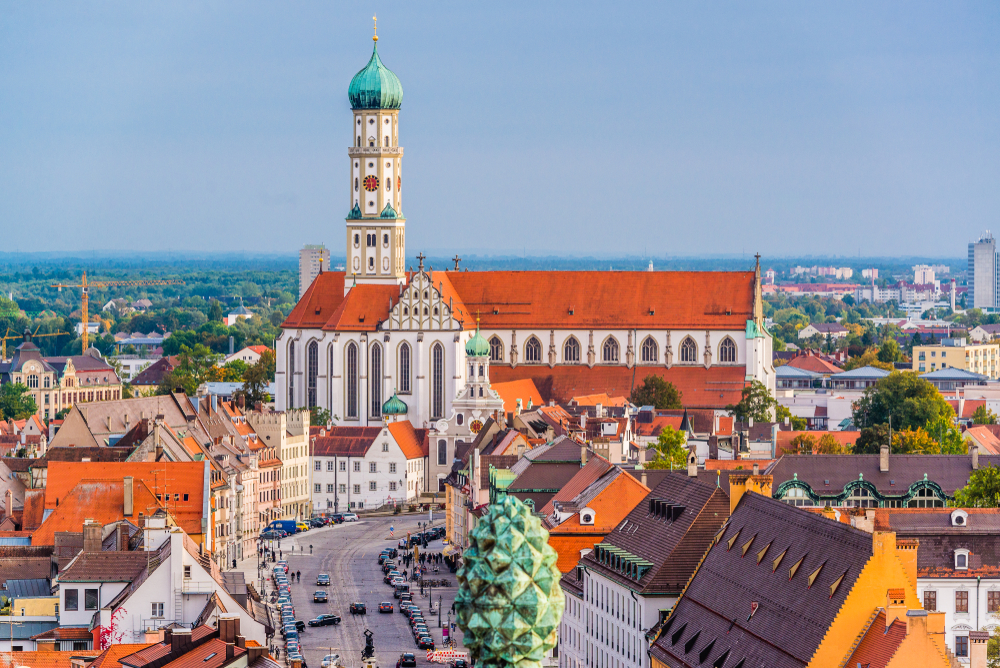
As the oldest town in Bavaria and the second oldest town in the entire country, Augsburg should definitely be on your list of medieval towns to visit.
A stop at Fuggerei is a must, as it’s the first housing complex to ever be built across the globe – and stands in perfect condition with residents who still pay only $1.00/year to live here.
Its historic architecture portrays a time of wealth, and the most magnificent of them all is the City Hall building which was built in the early 1600s as a symbol of power.
If you’re lucky, you’ll be in town for one of Augsburg’s many festivals that have a way of blending art, history, music, and culture in a way that everyone can enjoy.
8. Cochem
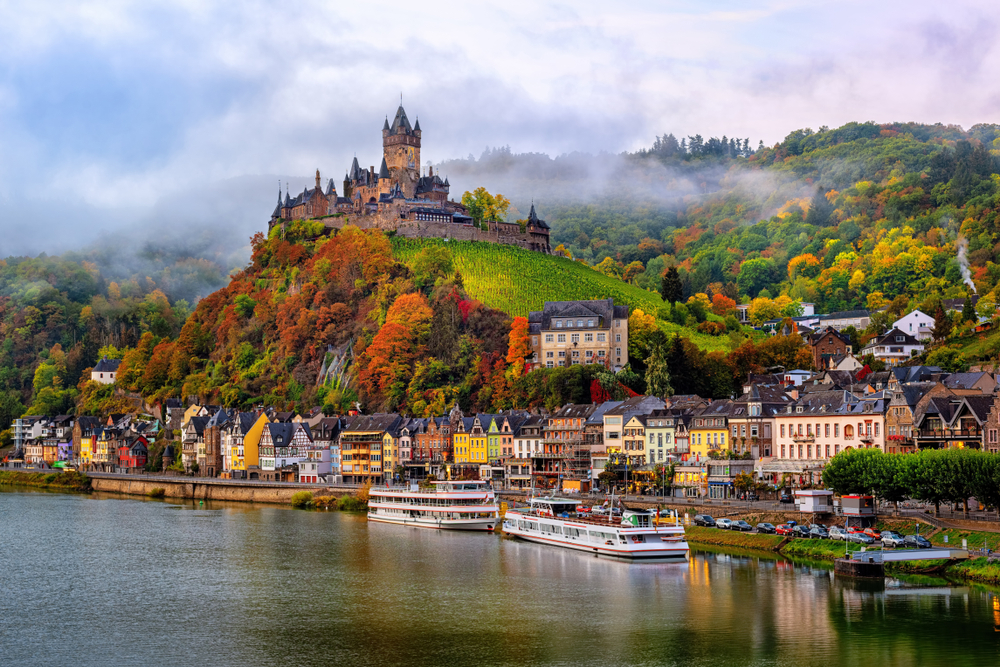
Located in the valley of Moselle, Cochem may be the smallest district capital in the country but packs a punch with its scenic beauty and historical significance – and is also one of the Top 20 Best Day Trips from Cologne, Germany!
Sitting high on a grassy hill overlooking the town you’ll find the town’s prized possession, the Cochem Castle, which was ultimately destroyed in the late 1600s but was painstakingly restored by the 19th century.
Take a tour of the castle to admire the architecture, furniture, art, and other artifacts, or spend time exploring the town with the beautiful view of the castle always out in the distance.
Stroll amongst the half-timbered houses, try some local cuisine, and visit a few of the city gate towers that have managed to stay fully intact thanks to their heavy-duty build.
9. Monschau
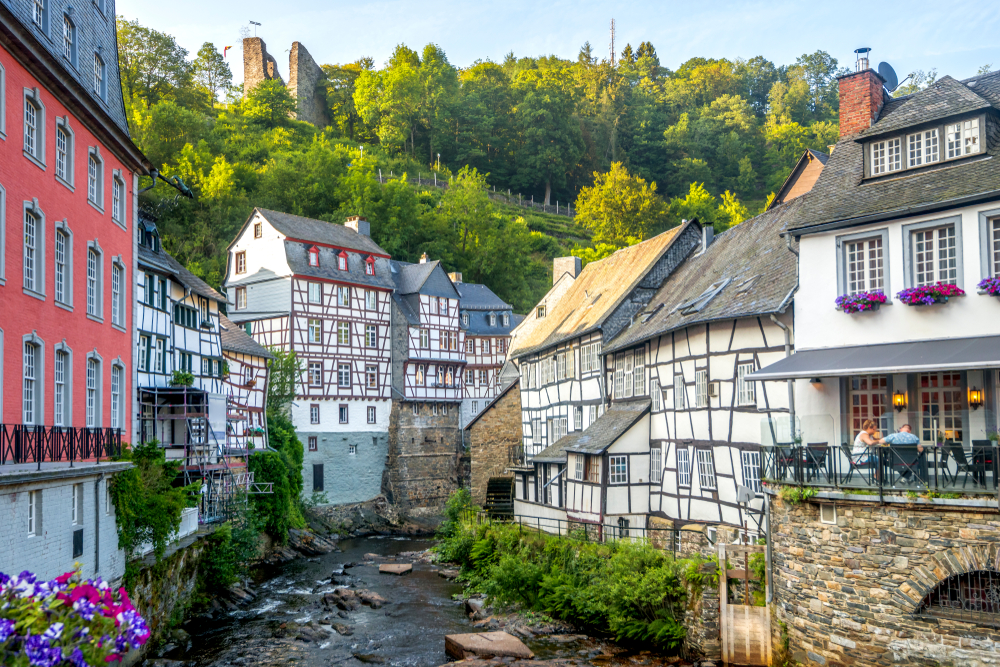
Hidden within the depths of western Germany, Monschau is not a very well-known German town. This well-kept secret city is oozing with charm, history, and fairytale vibes.
Located along the Rur River Valley and nestled within the Eiffel Mountains, the scenic town remains untouched by modern advances.
The river runs through the center of town, and you’ll find half-timbered houses, cute little cafes, historic landmarks, and interesting museums at every turn.
Spend the day exploring the shops that line the market square, venture off to the historic mustard mill that was the main source of wealth through the Middle Ages, and stay for a lively concert or opera showing in the Monschau Castle.
10. Worms
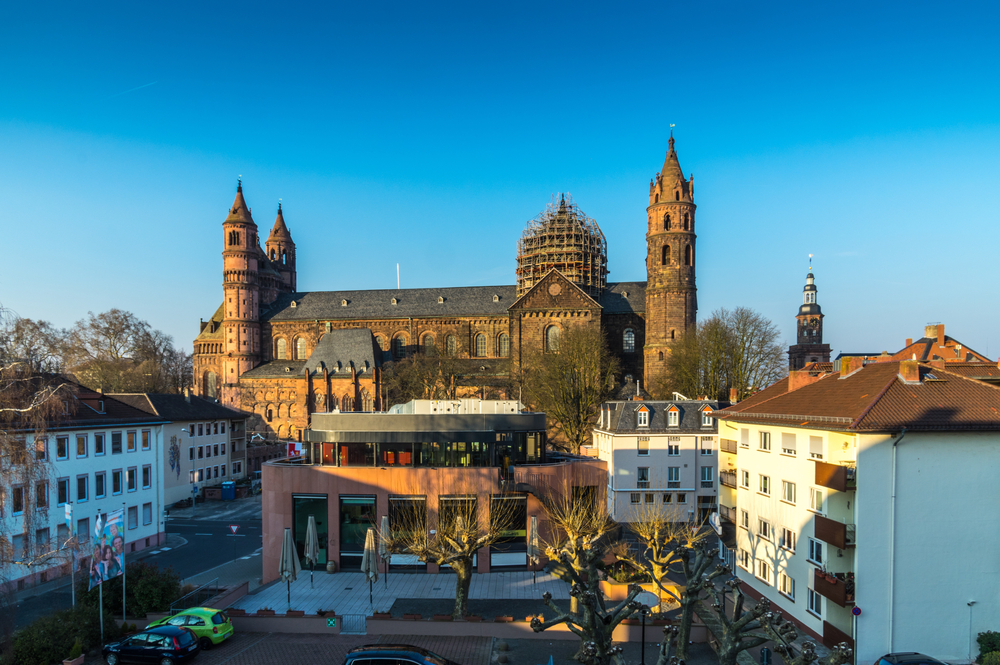
Travel back in time to one of Germany’s oldest towns, Worms, and see how early Roman settlers spent their days and how their role in the wine trade promoted their wealth.
Dating back thousands of years, Worms was one of the leading locations for the Holy Roman Empire, so it’s only right that the cathedral here is larger than life.
The cathedral sits high on a hill above the town. It’s amazing to think that this enormous, and well-detailed structure was built in the early 1100s.
As you walk through the cobblestone streets and admire its ancient architecture, imagine how over 100+ empire assemblies took place here including the famous meeting where Martin Luther pleaded for change.
11. Nuremberg

The runner up to the famous city of Munich, Nuremberg is the second-largest city in Germany’s state of Bavaria in both size and inhabitants.
This beautiful city is nestled between the Pegnitz River and the Rhine-Main–Danube Canal, so you’ll have wonderful waterfront views wherever you go.
The convenient location along the water promoted trade and increased quality of life with dramatic advances and expansions during the Middle Ages.
You can see the impact first-hand, as the medieval city is well preserved with its half-timbered houses, the towering Nuremberg Castle, and traditional main market.
12. Heidelberg
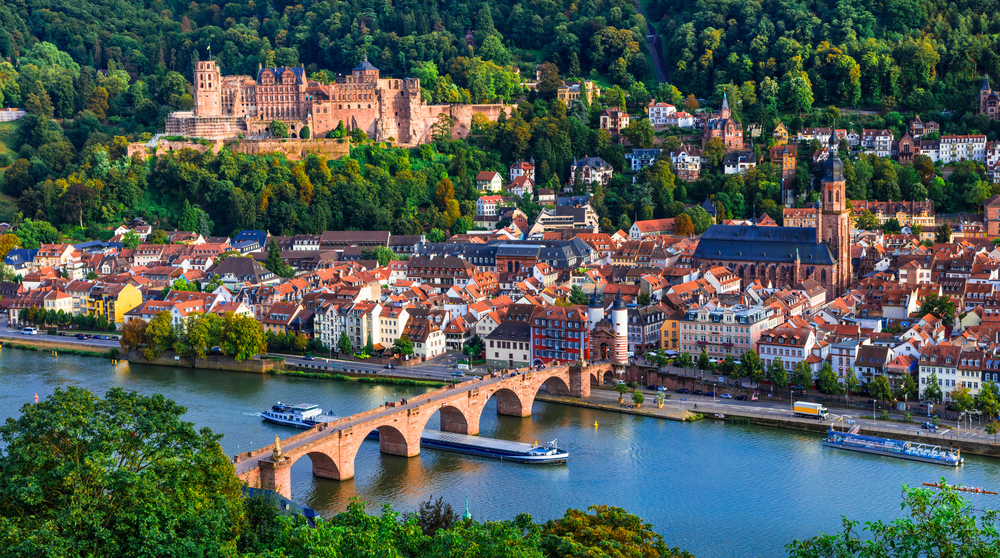
Nestled along the Neckar River and surrounded by dense forestry and rolling hills, the city of Heidelberg is the definition of romance bundled with an overflowing amount of history.
The city is one of the best places to see ancient architecture as it was fortunately spared from the extensive bombing raids that occurred during World War II.
Explore the ruins of the Heidelberg Castle which, although destroyed by the French during the 17th century, still provides a perfect example of Renaissance architecture.
A walk through the narrow streets and alleys of Hauptstrasse, the old town, is an absolute must to get up close and personal with ancient architecture, churches, and local boutiques.
13. Leipzig

Known as a booming trade city during the rise of the Roman Empire, Leipzig is located at the heart of the medieval trade routes.
The city was also the hub for learning about cultures and music. Its artsy vibes still live on today in all parts of the city, including the talented choir at St. Thomas Church.
Explore the market, and check out the daily farmers markets and music festivals while admiring the Renaissance architecture of the City Hall.
Go for a canoe ride or rent a kayak to paddle along the Karl-Heine Canal and imagine the trade ships that once dominated the waters.
14. Bonn
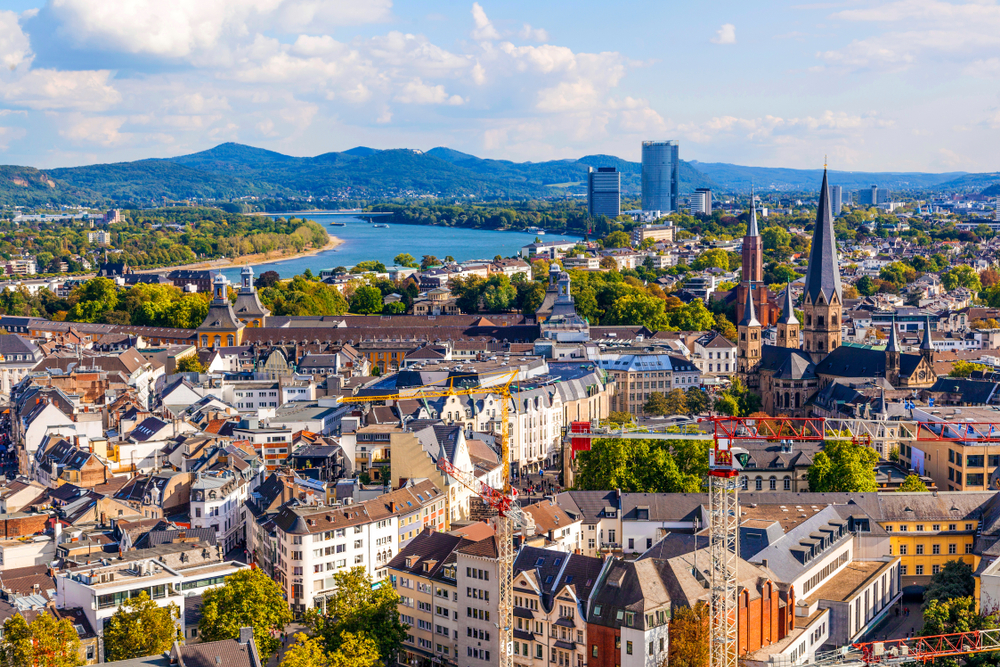
Once known as the capital of Germany until the German reunification took place after World War II, Bonn is a gem with centuries of history to absorb and appreciate.
The city boasts the largest metropolitan area in all of Germany, with an ever-growing number of inhabitants, so you’ll find the perfect blend of medieval buildings and modern additions.
Aside from the abundance of museums that dive deep into the city’s history, Bonn Minster is a great place to get some perspective of medieval life as one of the oldest churches in all of Germany. Dating back to the early 11th century, the church is comprised of 5 large towers and is the perfect example of high-quality architecture from the Middle Ages.
15. Trier
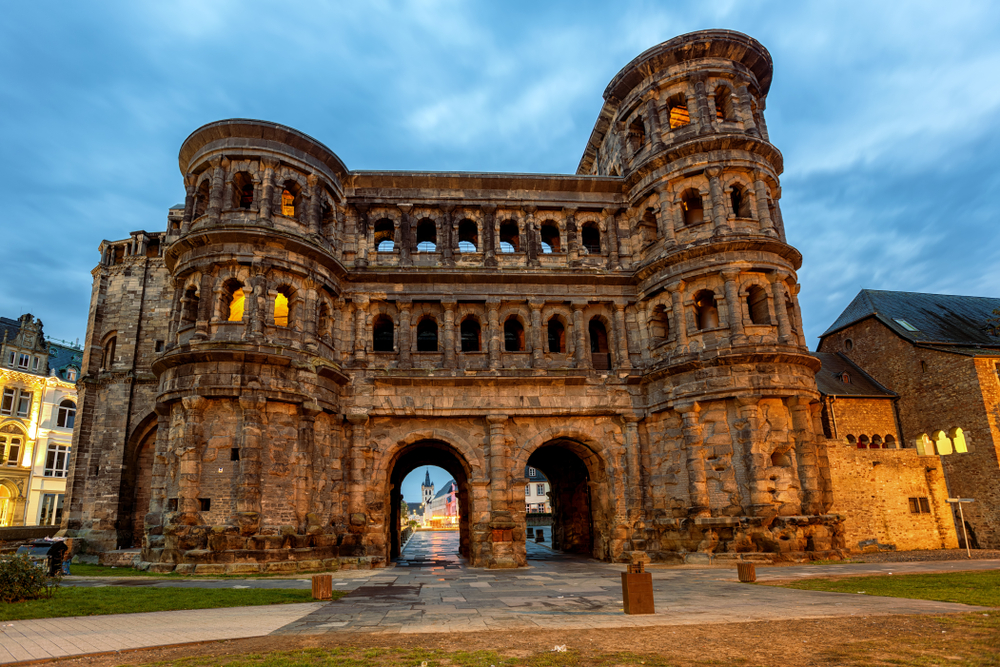
Nicknamed “Rome of the North”, Trier is one of the oldest German cities with an abundance of historical landmarks dating back to the time of the Roman Empire.
The most iconic – and the oldest – attraction in Trier is easily the Porta Nigra, which dates back to 180 AD and is considered to be one of the most well intact Roman gates in Germany. A close runner-up is the Basilica of Constantine, where you can walk through the throne room of the once powerful emperor.
Tours are available through the Imperial Baths that served many purposes throughout history, including a royal palace barracks, and monastery.
16. Ramsau bei Berchtesgaden
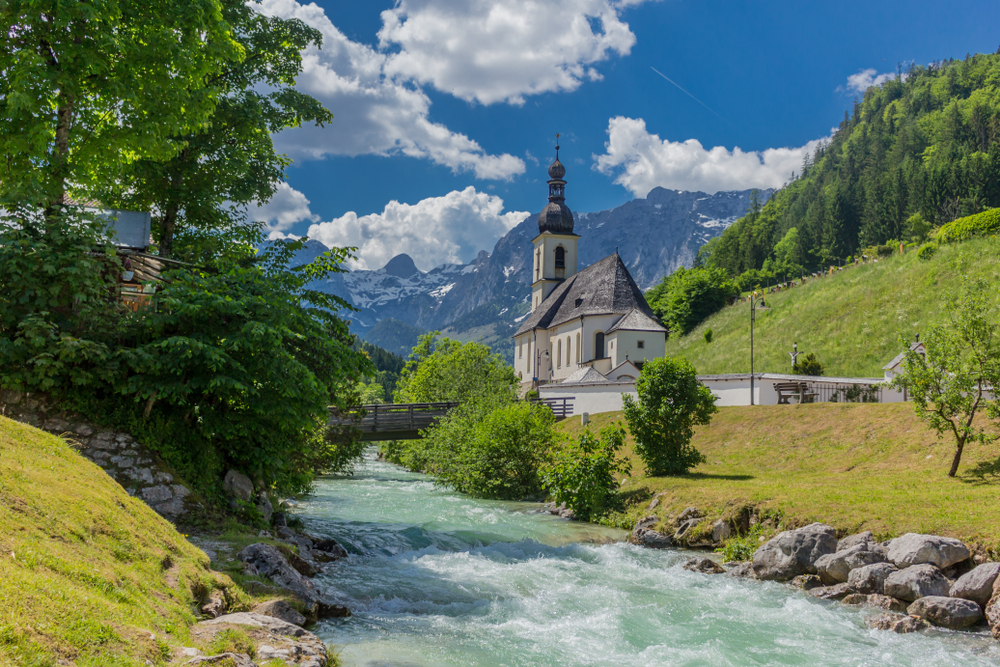
Known as the first and oldest mountaineering village in Germany, Ramsau bei Berchtesgaden is located along the Bavarian Alps, and its location played a leading role in its position during ancient times.
The highlight of the town is St. Sebastian’s Church, with its tall spire, ancient architecture, and scenic location along the Wimbachklamm Gorge.
Although not located within the old town, the magical forest of Zauberwald is just a stone’s throw away – and provides a sense of being in a fairytale setting.
17. Schiltach
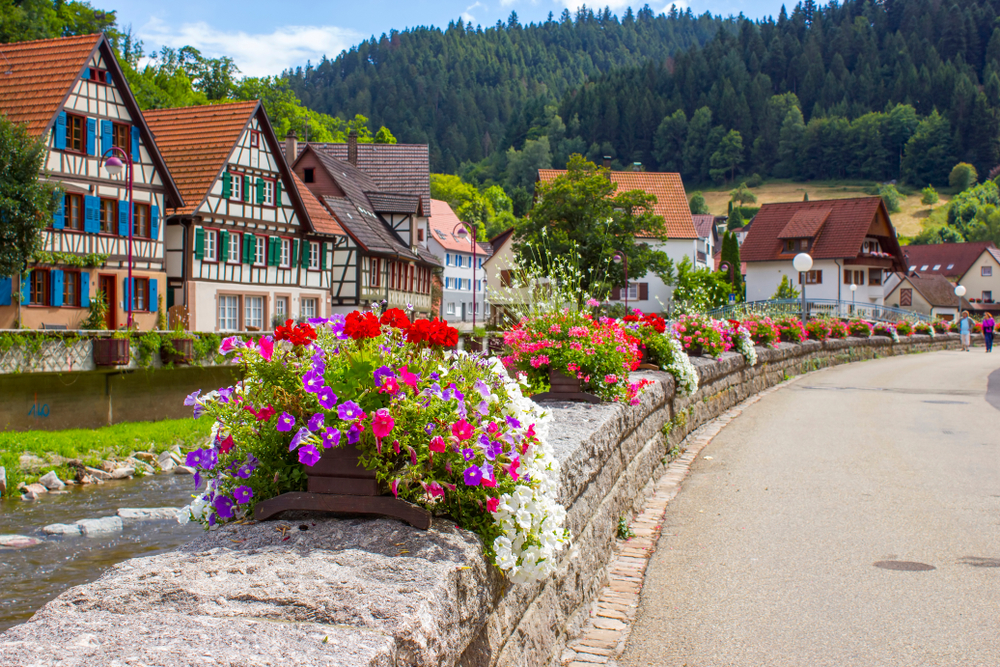
Located within the Black Forest region of Germany, the ancient forest adds to the medieval setting of Schiltach and provides a picture-perfect destination.
Surrounded by dense forestry and low mountains, the town is a sight to be seen with its half-timbered houses and towering historic buildings.
Go for a walk along the cobblestone streets and admire the vibrant, colored homes nestled along the rushing river with greenery at every turn.
The church is and has always been the hub of life in the town since its construction in the 11th century when there was nothing but farmland before the Dukes of Teck took over and expanded the area.
18. Meissen
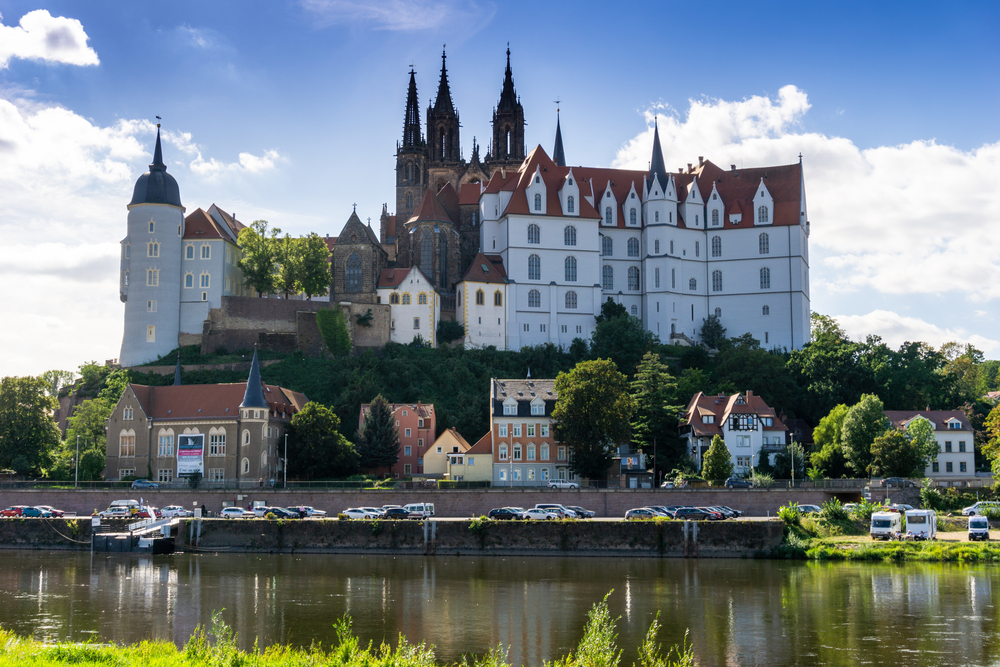
Dating back over 1,000 years, the city of Meissen has seen its fair share of history – and its location perched above the Elbe River provides a scenic view, to boot.
Although the majority of the Albrechtsburg Castle was built during the 15th century, the original fortifications that were expanded upon date back to the 900s. The castle is a masterpiece of gothic architecture, with its high vaulted ceilings, staircase tower, and arched doorways that are considered to be a piece of work far before its time.
After you’ve explored this massive structure, make your way over to the Meissen Cathedral and walk amongst the smallest medieval church in Germany.
Due to the small space available for building, the cathedral was constructed much smaller than anticipated – which also means that the preservation was much simpler. It’s now considered one of the most well-preserved churches in the world.
19. Miltenberg
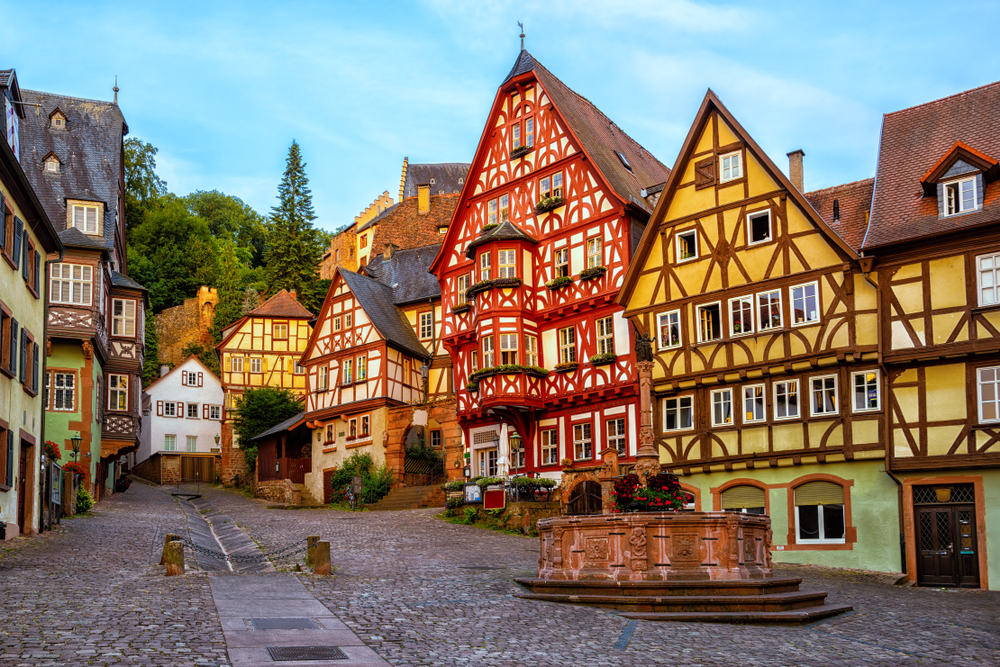
Nestled between the long-running Main River and high peaks of the Odenwald mountain range, Miltenberg served as the hub for international trade and the wealth provided by it can be seen in its magnificent old town.
Walk along the Old Town to admire over 100 half-timbered houses sporting colors of the rainbow and venture down narrow alleys for hidden gems and lesser known historical landmarks.
The Market Square is history buffs’ place to be, with many of its bordering houses being homes to significant noblemen and the lovely sandstone fountain at its center.
Built as a sanctuary for the Archbishop of Mainz during the 13th century, Miltenburg Castle is tucked away on a hillside and boasts vibrant, medieval architecture.
Considered to be one of the oldest inns in the entire world, a visit to Zum Riesen is a must to admire its Renaissance style and decorative touches.
20. Dinkelsbühl
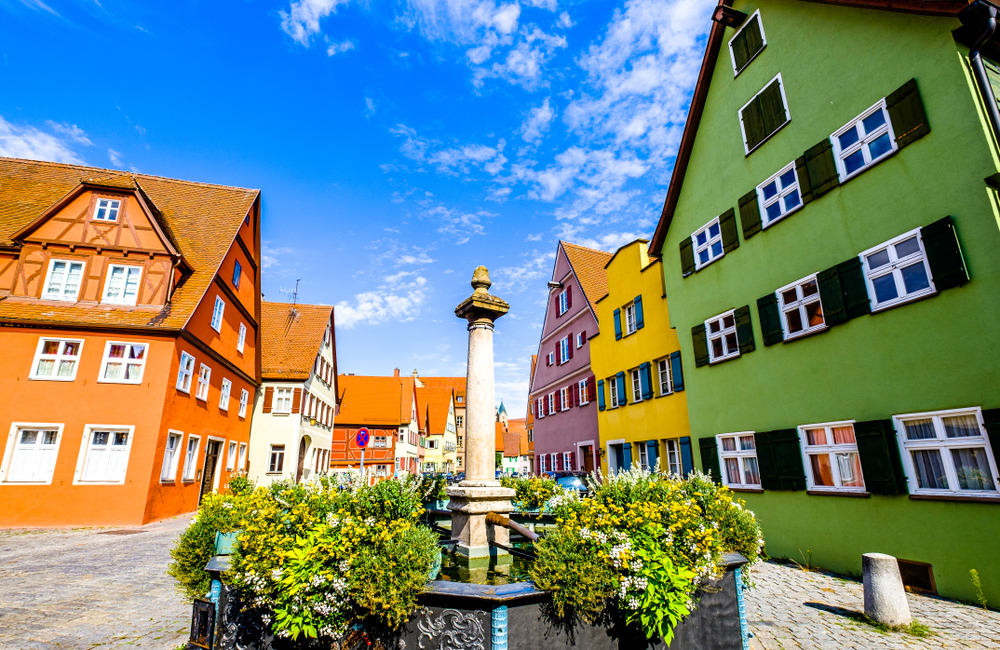
Known for having one of the most charming old towns in a country overflowing with them, you can’t pass up an opportunity to visit Dinkelsbühl and bask in all its history while enjoying the picturesque setting.
As you walk down the narrow cobblestone streets, you’ll be impressed by the near original condition of every building and landmark that surrounds you.
The vibrant half-timbered houses are perfectly designed so that no two adjoining homes are the same color. Statues are peppered throughout the streets, providing even more charm while honoring historic events that helped shape the town into what it is today.
Admire the architecture of the 14th-century city hall building, Haus der Geschichte, that has been transformed into a museum and dives deep into the town’s history.
21. Bamberg

Known for its abundance of local breweries and unique alcoholic creations, Bamberg is a place where history and beer meet for a lively time that’s both fun and educational.
The town is famous for its Old Town Hall, which was the only of its kind when first built in the late 14th century, having been located on its own island. The only way to access the Town Hall is by walking along the pedestrian bridge and across the scenic River of Bamberg.
Another popular attraction is the Peter’s and St. George’s Imperial Cathedral, which is overflowing with history from its ancient architecture to the tomb of Emperor Henry II who died in the early 11th century.
The Schlenkerla Brewery has been in business since 1405 and to this day they store their unique beer selections in wooden barrels and serve authentic Bavarian cuisine.
22. Nördlingen
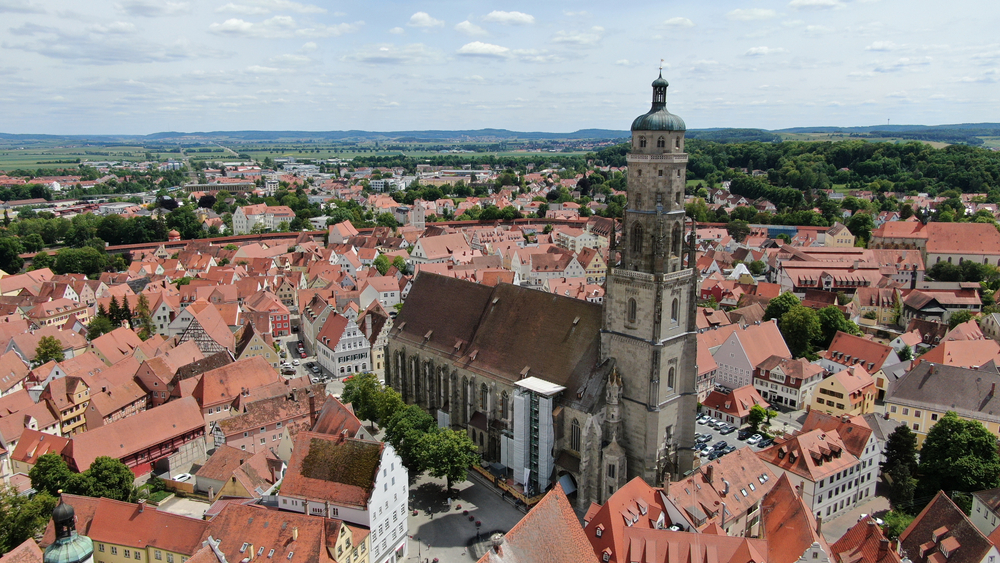
Aside from Nördlingen’s many well-preserved historic landmarks, scientists have confirmed that the town is completely covered in microscopic diamonds as a result of an asteroid that sent thousands of rocks filled with gemstones in every direction.
During the construction of the town, the people established a quarry for building materials completely unaware that the rocks they were using were a result of an ancient asteroid strike.
Although these diamonds can only be seen with a microscope and are too small to be worth any money, it’s a unique feature you won’t find anywhere else.
On top of this, the town is one of the very few places in Germany where the city wall still stands strong after 1,000+ years.
23. Tübingen
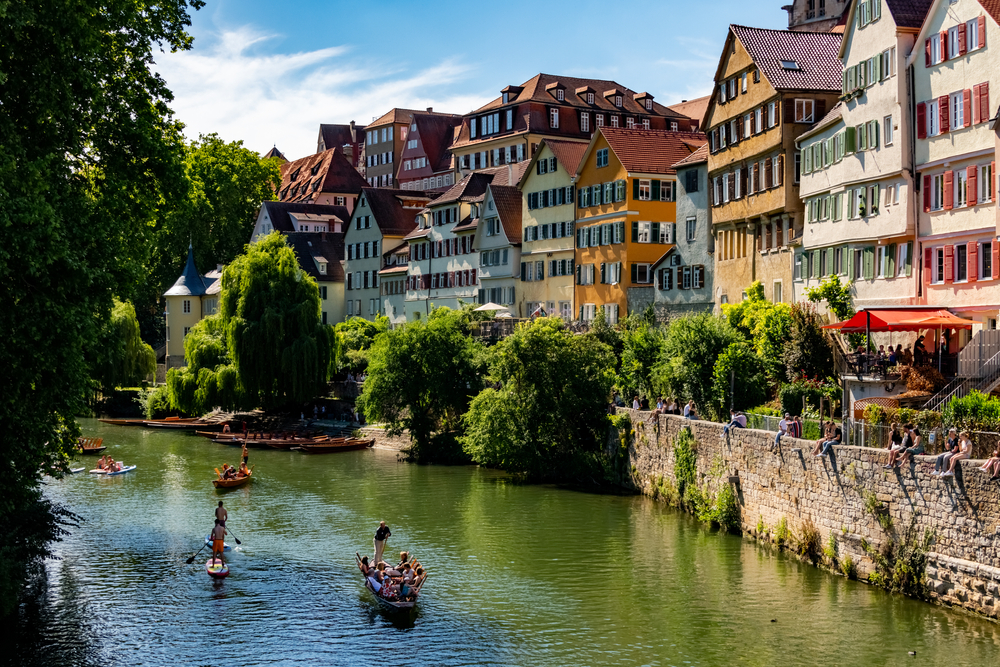
Once a medieval village, Tübingen has become a lively university town, so although you’ll be surrounded by ancient buildings and historic landmarks, the scene here is rather young.
For the best view of the city and the largest structure in town, make your way over to the Hohentübingen Castle, which was first built in 1037.
The castle was expanded upon during the 16th century, so when you walk through its ruins you can admire a combination of medieval and modern architectural styles.
Built on the foundation of 2 old churches, the St. George’s Collegiate Church is a 15th-century masterpiece with its extravagant bell tower and stunning stained glass windows.
Take a tour of the Bebenhausen Abbey, a school that doubled as a hunting retreat for nobility, which dates back to 1183 and boasts exquisite details.
24. Bacharach
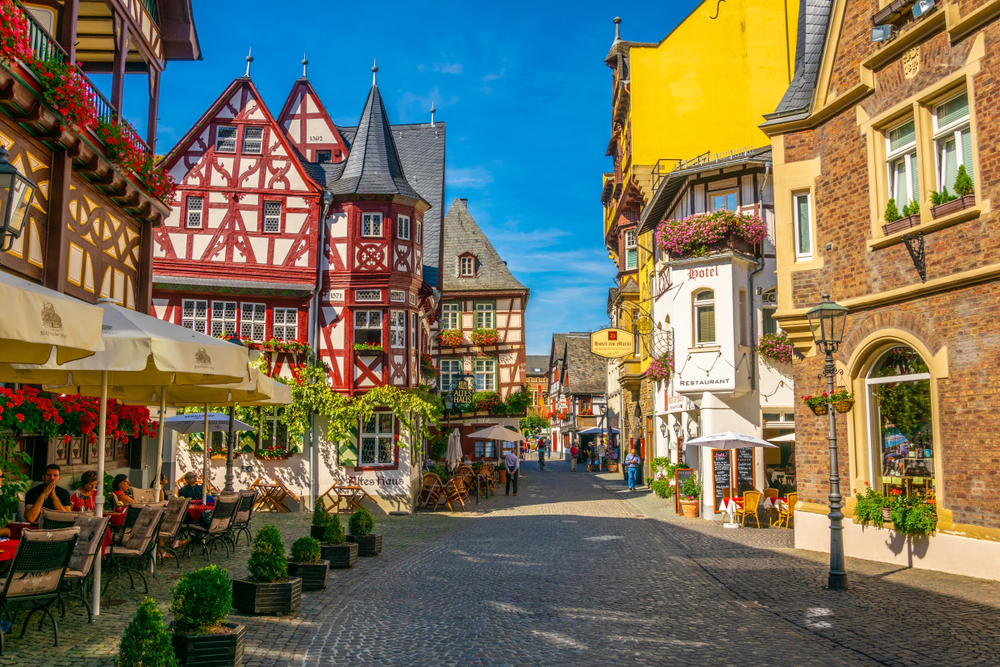
Nestled along the River Rhine, the ancient town of Bacharach is a beautiful sight with towering historic landmarks that dominate the skyline.
The castle of Burg Stahleck stands tall in near perfect condition since its construction during the 12th century, and overlooks the town, vineyards, and the Lorelei Valley.
Hidden in the vineyards is the Postenturm, a historic watchtower, that provides sweeping views of the area and gives insight into how guards protected their homes.
When you walk through the Old Town you’ll be surrounded by beautiful half-timbered houses – but the one that stands out from the rest is the Altes Haus, which is the oldest of the bunch.
25. Wurzburg
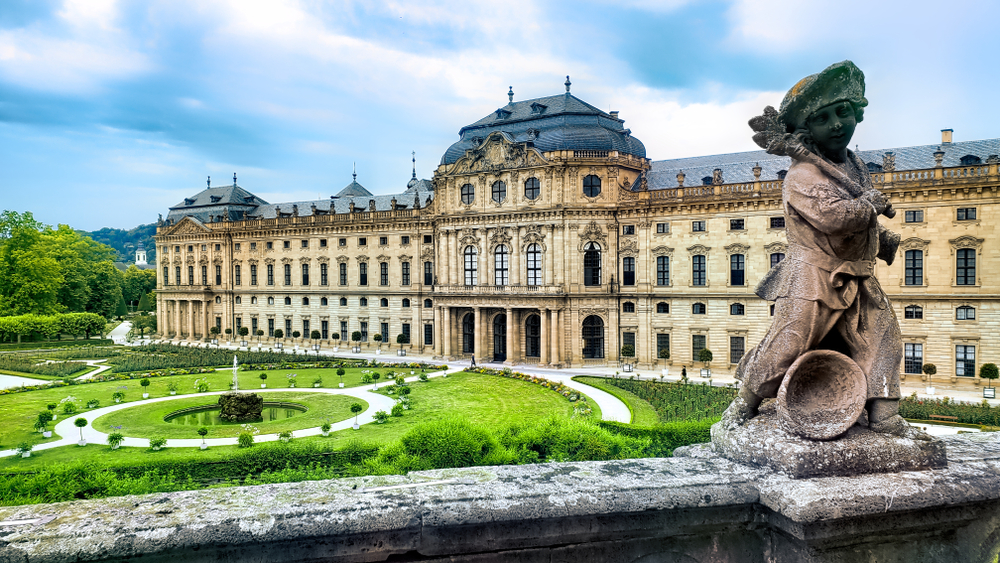
Much of Wurzburg was destroyed after falling victim to the devastating bombings of World War II, but has since been meticulously restored to its original, medieval state.
Once home to the Prince-Bishops and having been significantly damaged by the war, the Würzburg Residenz has been fully restored and is overflowing with history. The ancient architecture alone is said to be some of the finest Baroque-style structures in all of Germany with a focus on its breathtaking mural and wide staircase hall.
26. Esslingen
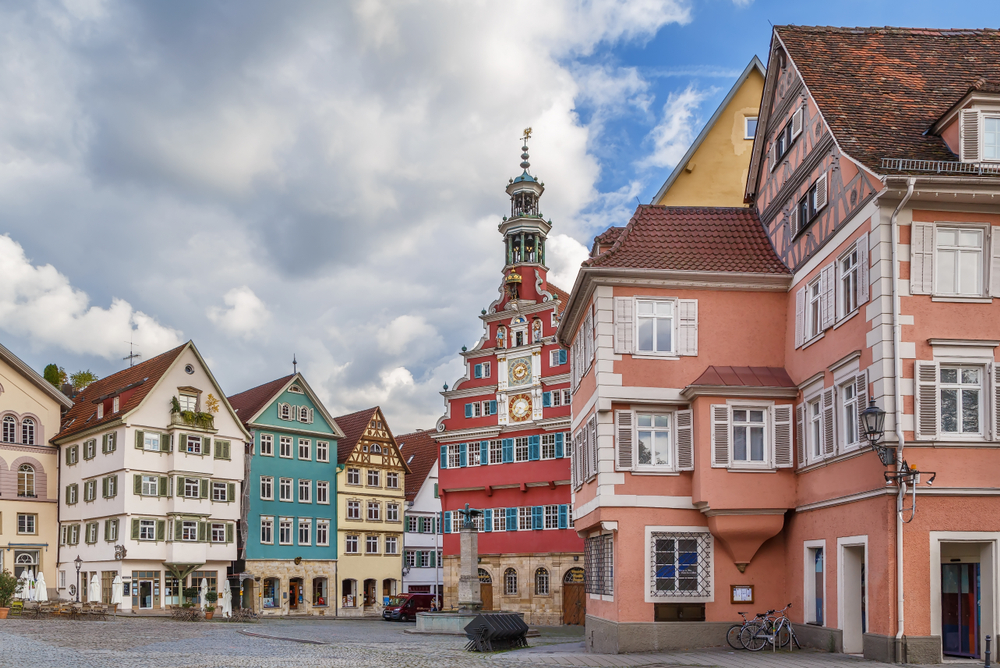
You could easily spend your entire day walking the cobblestone streets of Esslingen and admiring the 200+ brightly colored, half-timbered houses that shape this historic town.
It’s amazing to think that these homes were built over 500 years ago but manage to look like they have not aged a day.
You’ll find the oldest clock tower in the country within this ancient town and although you can not climb up it, it’s still a wonderful and significant sight to see.
The most dramatic piece of architecture is easily the Stadtkirche St. Dionys, with its 2 towering gothic towers connected at the top via footbridge.
27. Wernigerode
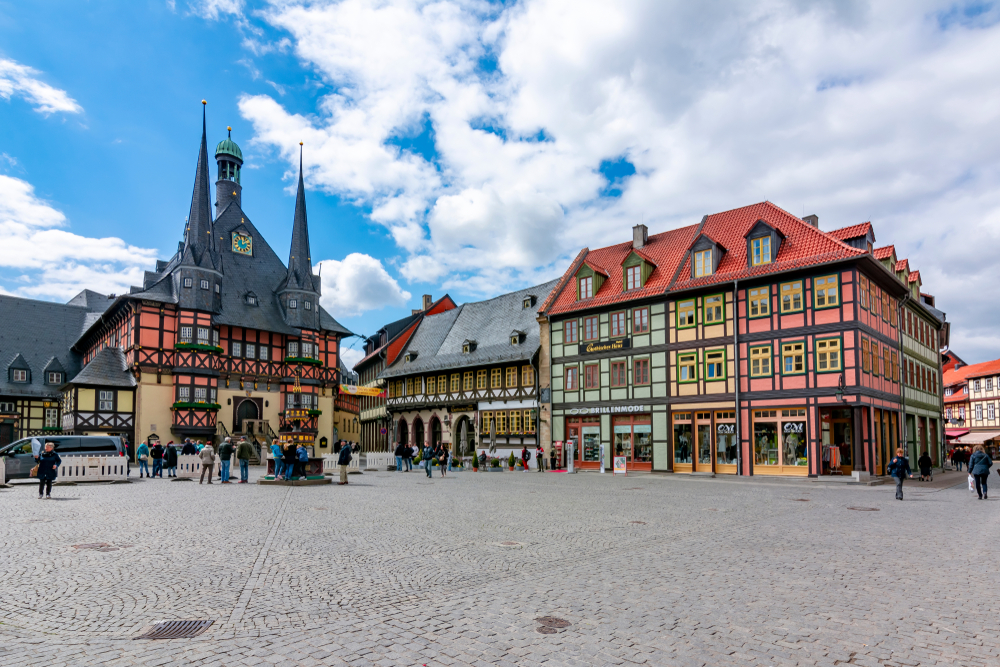
Nicknamed the “Pearl of the Harz”, Wernigerode is considered to be one of the most breathtaking towns along the mountain range, and its historic significance only adds to its splendor.
One of the most underrated castles in Germany is the Wernigerode Castle, which was originally built as a fortress during the Middle Ages before expanding and transforming the castle with Baroque-style architecture.
However, the real show stopper is the massive Rathaus town hall, which overlooks the square and is intricately designed with stained glass, murals, and sculptures dating back to 1420.
28. Aachen
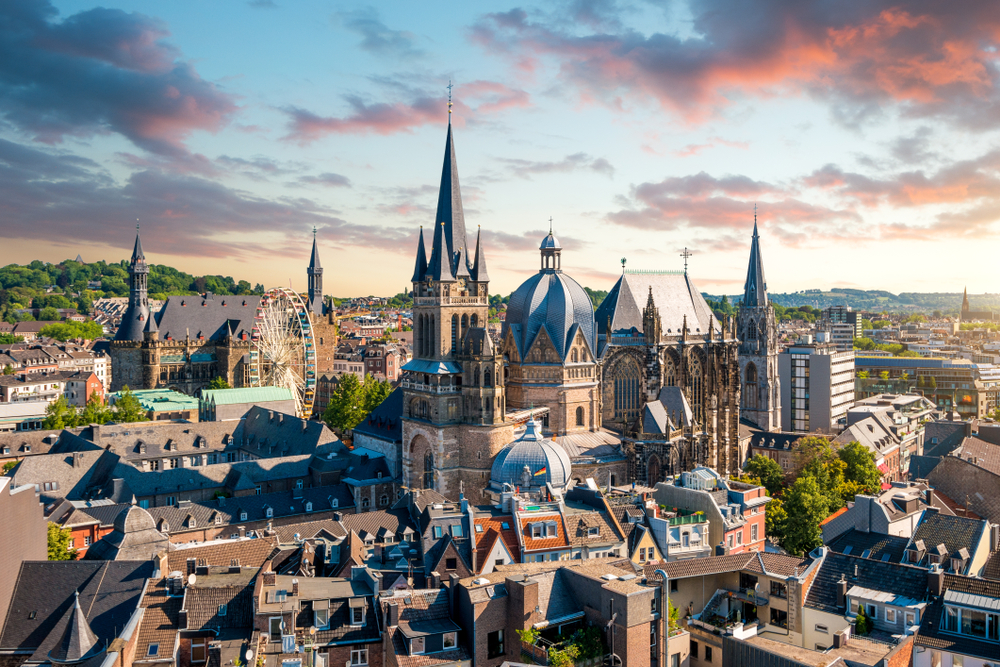
Aachen’s convenient location has played an important role in its history, as it’s just a stone’s throw away from the Dutch and Belgian borders and is located at the base of Eifel and the Ardennes Mountains.
The famous ruler Charlemagne was very fond of this town, and you’ll notice that a variety of landmarks focus on honoring him and educating visitors about his importance. There is even a Route Charlemagne, where tourists can walk a trail that takes you to all of his landmarks.
The Aachen Cathedral, the oldest of its kind, boasts a palace-like church that was built for the great Charlemagne in 796 and has many luxurious touches like the marble throne and a golden reliquary.
29. Erfurt
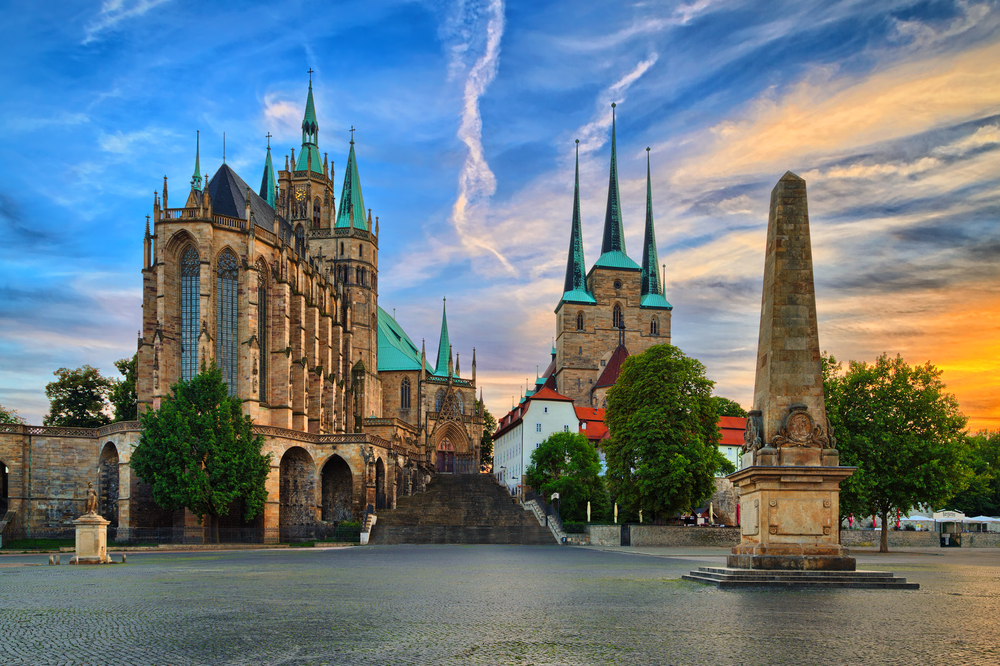
Known as the place where Martin Luther established himself as a monk, Erfurt is oozing with history – and luckily managed to escape World War II completely intact.
Built on the foundation of a church established in AD 742, the Roman Catholic Erfurt Cathedral is layered with history and is home to the oldest bell tower in the world.
Along the same lines, the Old Synagogue is the oldest of its kind in all of Europe and has managed to stay perfectly intact throughout various wars.
There’s also a historic fish market, an old merchant bridge, the monastery where Martin Luther spent his days, and a variety of significant churches to see.
30. Koblenz
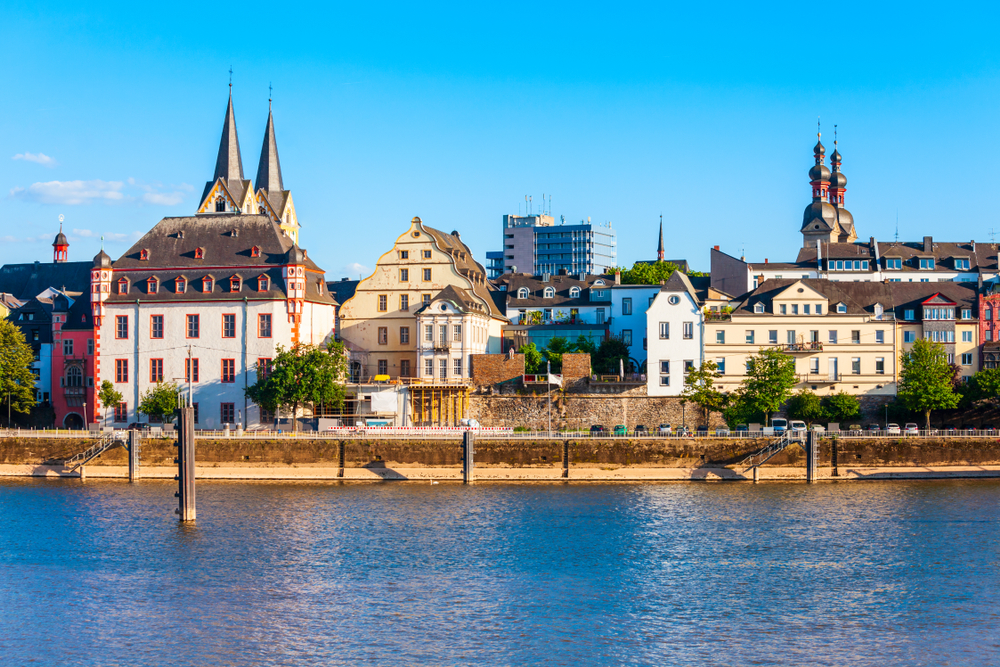
Located where the extensive Rhine River meets the mighty Mosel River, Koblenz quickly made a name for itself with a booming trade business right at its doorstep.
The Lahneck Castle is the perfect example of the wealth of the town, with the detail that was put into its Renaissance architecture and its breathtaking location overlooking both rivers.
An even more extravagant castle, which was built at the same time during the 13th century, is the Stolzenfels Castle with its unique white color and awe-inspiring Rhine Romanticism.



